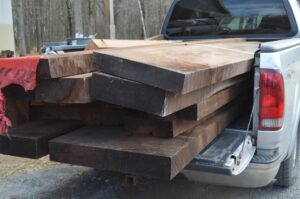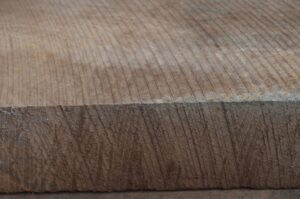Texture
Texture—grain, life
Is it just me or is there something wrong with this picture? In Lowes, the big US construction lumber and hardware supplier, they are selling pine grown in New Zealand that looks, feels and weighs-in identically to the Eastern white pine growing here in the woods around me and in the mega-giant The Home Depot I see construction lumber labelled made in Sweden. The percentages must add up somewhere but at what cost? Sawmills struggle to survive while these national entities force their will with imports that make no sense. Files made in Mexico means work for Mexico but now how does that work for the more local people on both sides of the border. You have to visit Mexico and see conditions people work in to understand what I am talking about. Perhaps someone can explain!

On saner levels, my friend Jim drove in with a truckload of Walnut. Now some people dream of getting a few hundred dollars for a truckload of hardwood whilst thankfully some dream of getting a truckload of hardwood for a few hundred dollars. I recall a few weeks ago telling you about the difference we craftsmen feel about grain and wood. That we search the inner fibres for grain others know nothing about—texture if you will. Well, life is full of texture when you get off the conveyor belt to become a life-style woodworker like myself and my friend Marty who makes violins and mandolins. His split billets of spruce and maple, the stuff he makes his instruments from, come from somewhere he knows the source of. Someone knew someone who knew someone who was selling some tone woods and Bam! Texture! Pure, riven, real woodworking texture.
Jim’s truckload was the same thing. A relative had a 100+ year old walnut tree that had to be removed. More on that later all being well. Now, as I understand it, this tree was over 5’ across, which makes it much older than 100 years, but that’s texture. I’m leaning on the truck imagining table legs and sleigh beds and book-matched tabletops and crotch veneers seamlessly joined in perfect harmony and thinking it doesn’t get much better than this. 


my gosh that is gorgeous walnut, mr. sellers. that wood deserves a truckload of reverence to go along with it! I know you all will do it well.
Dearest Paul. This is a fine read. I very much agree with you on the American labour and the way mega stores kill the jobs here, in the US. Anyhow, wish you all the best in the new workshop creation (but if I shall call it right, you’re a true artist that lives with the mother nature, so it has to be called a Art studio!)
Jake from Los Angeles, California